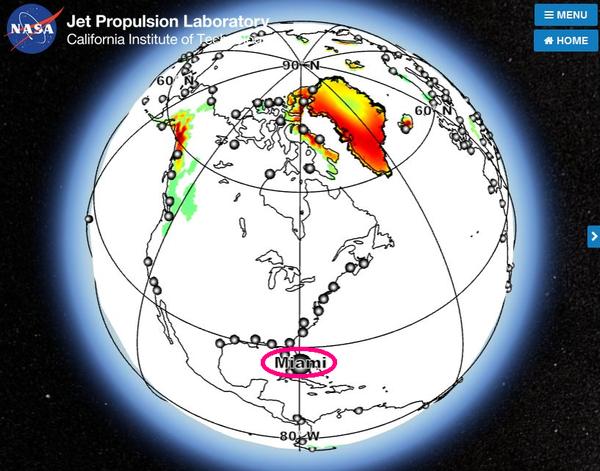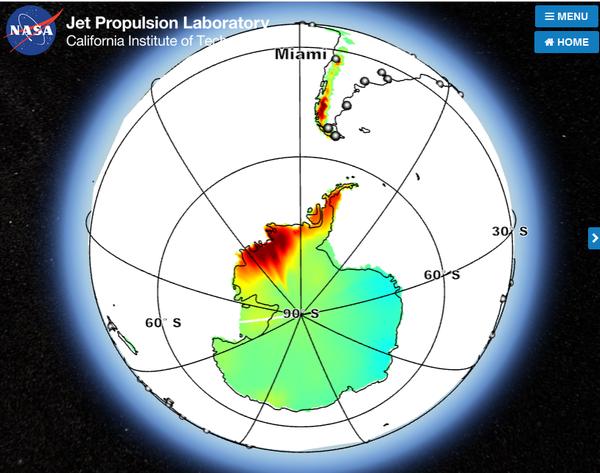
Though the ocean will never flood Pittsburgh, I’m still fascinated by the rising sea.
Back in October I wrote about sea level fingerprints, the pattern of tiny elevation changes in sea level caused by uneven gravitational forces around the globe. The highest ocean peaks are in the tropics, the deepest valleys are near melting glaciers. As the land loses mass (ice) its gravitational pull decreases and it stops hugging the ocean to its shore. The water has to go somewhere so it goes to the tropics.
This means that glacial melt affects sea level rise in two ways:
- It adds water to the ocean that used to be sequestered on land and …
- It alters the sea level fingerprint, lowering the ocean nearby and raising it far away.
If you do the complicated math, you can find out how individual melting glaciers will affect sea level at specific locations.
Last month, scientists at NASA Jet Propulsion Lab did just that when they published a paper in Science Advances and an online tool that illustrates how glaciers will affect 293 coastal cities.
Let’s take a look at Miami.
Almost half the sea level rise in Miami will be caused by glaciers (47.4% of total sea level rise) and almost half of that will be Greenland’s fault (20% of total sea level rise). That’s why Greenland is so red in the screenshot above.
The next highest glacial contributor in Miami will be Antarctica (12% of total sea level rise). In the screenshot below you can see that South American glaciers help, too.

In fact, the entire northern hemisphere is endangered by Antarctica’s melting ice because it’s so far away. Ironically the safest place to be is right next to a melting glacier. Sea level will go down at those sites.
See the maps for yourself and try the online tool at NASA JPL. Read more about it at These are the melting glaciers that might someday drown your city, according to NASA in the Washington Post.
(*) Pittsburgh’s Point is 711 feet above sea level. My immediate family lives 10 to 25 feet above sea level in Virginia and Florida.
(screenshots of glacial contribution to sea level rise in Miami from the online tool at NASA Jet Propulsion Lab. On the first screenshot I added a pink circle to highlight Miami. Click on the images to use the online tool.)
Kate, congratulations on receiving the Todd Award, justly deserved.
Off the subject, but congratulations on your well deserved Todd award!
Thank you! And I am getting better on the subject of gravity.